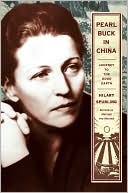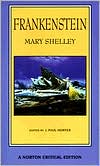The Whale: In Search of the Giants of the Sea
“Unpredictable and amusing and informative and original, cavorting between biology, history, travel writing, and memoir.”\ —Mark Kurlansky\ The Whale by Philip Hoare is a enthralling and eye-opening literary leviathan swimming in similar bestselling waters as Cod and The Secret Life of Lobsters. Winner of the BBC Samuel Johnson Prize for Nonfiction, The Whale is a lively travelogue through the history, literature, and lore of the king of the sea—the remarkable mammals that we human beings...
Search in google:
Unpredictable and amusing and informative and original, cavorting between biology, history, travel writing, and memoir. Mark Kurlansky The Whale by Philip Hoare is a enthralling and eye-opening literary leviathan swimming in similar bestselling waters as Cod and The Secret Life of Lobsters. Winner of the BBC Samuel Johnson Prize for Nonfiction, The Whale is a lively travelogue through the history, literature, and lore of the king of the sea the remarkable mammals that we human beings have long been fascinated with, from Moby Dick to Free Willy. Bestselling author and naturalist Bernd Heinrich calls it, a moving and extraordinary book, and Hoare s sparkling account of swimming with these incredible behemoths will delight whale and wildlife aficionados, lovers of the sea and sea stories, as well as the socially and environmentally conscious reader. From his childhood fascination with the gigantic Natural History Museum model of a blue whale to his adult encounters with the living animals in the Atlantic Ocean, the acclaimed writer Philip Hoare has been obsessed with whales. Journeying through human and nat-ural history, The Whale is the result of his voyage of discovery into the heart of this obsession and the book that inspired it: Herman Melville's Moby-Dick. Taking us deep into their domain, Hoare shows us these mysterious creatures as they have never been seen before. Following in Ishmael's footsteps, he explores the troubled history of man and whale; visits the historic whaling locales of New Bedford, Nantucket, and the Azores; and traces the whale's cultural history from Jonah to Free Willy. Winner of the prestigious BBC Samuel Johnson Prize for Non-Fiction, The Whale is an unforgettable and often moving attempt to explain why these strange and beautiful animals still exert such a powerful hold on our imagination.The Barnes & Noble ReviewPhilip Hoare has written a biography of Noel Coward and the history of a British military hospital, but The Whale is the book he was meant for. Its writing was prompted by the filmmaker John Waters, who worried that his friend was spending more time with whales than humans on his regular visits to Provincetown, MA. "I dream of bodies underwater," Hoare writes in the prologue. By the end of the book, you believe him.Hoare writes like Proust or W. G. Sebald, delivering his meditations on history, literature (Moby Dick. What else?), and the current state of the world's largest animals in the wandering style of some melancholy professor (or maybe just an unemployed one). The book is filled with photographs and old engravings, and travels easily between Europe and America, but the real setting is Hoare's own head, which turns out to be a strange, lovely, fascinating place. He admits finding whales almost disturbingly sensual. He speculates, with charming irresponsibly, on what Melville's dreams were like. More than once, he writes, "Ah the world, oh the whale." This kind of decadence will get you torn to pieces in an MFA seminar (that may be a compliement).But Hoare has also done a huge amount of research; I grew up with my own childhood whale fixation--plastic models, coffee-table books, lots of Discovery channel viewing--without ever learning, for example, that Sperm Whales can stun or even kill their prey by emitting 200-decibel clicks from their head. But that's because childish interest and adult obsession are very different things. By the end of the book, as Hoare joins his subjects in the ocean, it's as though he's finally acting on the impulsethat's been driving him all along. This kind of over-investment can't be good for your personal life, but Hoare makes it seem like a necessary precondition for good non-fiction. "While people were shopping, eating, talking, waking, sleeping," he writes, "I swam with whales."--Reviewed by Richard Beck
III.\ The Sperm Whale \ \ I know him not, and never will.\ The Tail, Moby-Dick\ \ \ In some medieval past, someone pierced the head of the whale, releasing the waxy oil that filled it. As it hit the cool northern air, this hot, precious liquid became cloudy, looking for all the world like semen. Thus men came to believe that the leviathan carried its seed in its head. It may be saddled with an inelegant, even improper name, but it is also an entirely apt title, for the sperm whale is the seminal whale: the whale before all others, the emperor of whales, his imperial cetacean majesty, a whale of inherent, regal power. It fulfils our every expectation of the whale. Think of a whale, and a sperm whale swims into your head. Ask a child to draw a whale, and he will trace out a sperm whale, riding high on the sea.But the sperm whale also bears the legacy of our sins; an animal whose life came to be written only because it was taken; a whale so wreathed in superlatives and impossibilities that if no one had ever seen it, we would hardly believe that it existed -- and even then, we might not be too sure. Only such a creature could lend Melville's book its power: after all, Moby-Dick could hardly have been written about a butterfly.Scientifically, it is in a family of its own. Sperm whales -- classified Physeter macrocephalus or 'big-headed blower' by Linnæus, the father of taxonomy, in 1758, but commonly called cachalots -- are the most ancient whales, the only remaining members of the Physeteridæ which evolved twenty-three million years ago and numbered twenty genera in the Pliocene and Miocene. (In fact, Linnæus at first identified four species: Physeter macrocephalus, P. catodon, P. microps and P. tursio, but all are now known as one, with the pygmy and dwarf sperms -- Kogia breviceps and K. sima -- recognized as a separate family, Kogiidæ.) Relics of prehistory, they are, in one scientist's words, 'victims of geologic time . . . held in the rubbery bindings of [their] own gigantic skin'. Their nearest relation on land is the hippopotamus, although with their grey wrinkledness, small eyes and ivory teeth, they remind me more of elephants.The sperm whale remains a class apart. Its shape itself seems somehow informed, inchoate, as though something were missing -- a pair of flippers or a fin. It is an unlikely outline for any animal, still less for the world's largest predator. To Ishmael, the whale was the ominous embodiment of 'half-formed fetal suggestions of supernatural agencies'. Now it is seen as a 'generally benign and vulnerable creature'; from a fearful foe it has become a placid, gentle giant of the seas. The distance between these two notions is the distance between myth and reality, between legend and science, between human history and natural history. It is a mark of its magical nature - and a symbol of the fate of all cetaceans -- that the sperm whale has achieved such a transformation, from willful demon to fragile survivor.Physeter macrocephalus may have been around for millennia, but we have really only known it for two hundred years; only with the advent of modern whaling, at the beginning of the eighteenth century, did man come to comprehend even an inkling of the animal. It continues to confound us. The sperm whale is a greater carnivore than any dinosaur -- a fact that threatens to turn its fearsome jaws into those of an aquatic tyrannosaur -- although its body is ninety-seven per cent water, just as humans are mostly made of the same liquid; we all contain oceans within us. Like other whales, the sperm whale never drinks. It has been described as a desert animal; like a camel living off its hump, its thick layer of blubber allows the whale to weather the vicissitudes of the ocean, from feast to famine. In an environment in which food stocks alter drastically, there is an advantage in being able to live for three months without having to eat, and to be able to range over huge distances in temperatures ranging from tropical to Arctic.Truly, these are global animals. Sperm whales live in every latitude and every ocean, from the North Atlantic to the South Pacific, even in the Mediterranean. Visual surveys from planes and ships have calculated that 360,000 of them still swim the world's seas, although that is barely a quarter of the population that flourished before the age of the iron harpoon. Their love of deep water, foraging off steep continental shelves, meant that until recently only whalers - who described their quarry as traveling in veins, as if guided 'by some infallible instinct' ('say, rather, secret intelligence from the Deity', adds Ishmael) -- saw sperm whales alive. As a result their study is still in embryo. It is as though we have hardly advanced since nineteenth-century illustrators depicted overweight whales lying on palm-fringed tropical beaches.What facts we do know cluster together like the whales themselves, defying interpretation. What color are they? Underwater, they appear ghostly grey filtered through the ocean's blue, but in sunlight they appear brown or even sleekly black, depending on their age and sex. They may even verge on a dandified purple or lavender, with pale freckles scattered on their underbellies, leading to the pearly whiteness of the 'beautiful and chaste looking mouth! from floor to ceiling lined, or rather papered with a glistening white membrane, glossy as bridal satins'. From the side and below, this whiteness glows like a half-open fridge; an invitation, and a warning. The huge head is patchy and mottled where the tissue-thin skin is constantly peeling like old paint; it is relatively smooth, but behind, the rest of the body is furrowed and creased like a prune. This mutability gives the animal a metamorphic dimension.From a hydrodynamic point of view, the sperm whale looks as though it were designed by an eccentric engineer. There are no concessions in its shape. Its sharp-angled flukes are not those of the sinuous and feminine humpback. It is a blunt blunderbuss of an animal; abrupt, no-nonsense. Its squareness appears to confront the water, to defy, rather than comply with the sea. Yet seen from above, its block-like head is quite narrow, wedge-shaped: this is an animal built to spend most of its life in the depths, so much so that one scientist considers it more apt to call the sperm whale a surfacer rather than a diver. Its very size allows the whale to spend long periods of time in the depths, its body being one huge oxygen tank.Slung beneath its signature snout is the sperm whale's other most formidable feature: its lower jaw, studded with forty or more teeth which fit into its toothless upper mandible like pins in an electrical socket. These ivory canines range in size from hen's egg to massive foot-long cones too broad for me to encircle in my fingers. Sliced in half, a tooth can reveal its owner's age by counting the layers of growth like the annular rings in a tree. In the most elderly whales, the teeth are 'much worn down, but undecayed; nor filled after our artificial fashion', Ishmael observes, although, in truth, sperm whales often suffer caries. In rare instances, they also possess unerupted upper teeth, relics of ancestors who boasted a full dentition. Natural selection has left their descendants with only a lower row, as if they had misplaced their dentures during the night. That fact makes the sperm whale seem more benign; only half a monster.The teeth are yellowy in color; only when polished do they acquire their bright creamy whiteness, like the little ivory tusks in the carved ebony elephants my grandfather brought back from India after the First World War. Heavy in the hand, they are 69 tactile, smooth, weighty with their benthic provenance. For all their prominence, their function is oddly obscure. One nineteenth-century writer observed that the teeth were marked with oblique scratches, 'as though made with a coarse rasp', the result, he thought, of 'corals, crushed shells, or sand' and frequent contact with the ocean floor. However, food found in the bellies of sperm whales seldom shows any tooth marks. Juveniles are eating squid and fish long before they develop teeth, and females do not produce any until late in maturity, if at all. Evidently, teeth are not necessary for sustenance. (In some cetaceans they are a positive hindrance: strap-toothed beaked whales, Mesoplodon layardi, have tusks which gradually grow over their jaws, creating a muzzle through which they still manage to feed.)In his Natural History of the Sperm Whale, published in 1839, Thomas Beale noted that three hunted whales, one of which was blind, and the other two with deformed jaws, were in otherwise good condition, proving that not only did they not need their teeth to feed, they had no need of eyesight, either. This great predator does not chew its prey; rather, it sucks it in like a giant vacuum cleaner, as the presence of ventral pleats on its throat indicates. Some commentators have proposed that sperm whales use their jaws as giant lures, dangling them like an angler's rod and baited with bioluminescence from previous meals of squid. Beale believed that the whale hung passively in the water, waiting for its food, while squid 'actually throng around the mouth and throat', attracted as much by the 'peculiar and very strong odor of the sperm whale' as by the 'white dazzling appearance' of its jaw. However, modern science has discovered otherwise. Addressing the conundrum of the sperm whale's head, Ishmael points out to his otherwise ignorant readers that its true shape is in no way reflected by its skull; no one who saw its bones could ever guess that the living animal possessed such a snout. To him, this is further evidence of deception on a massive scale, and in a phrenological diagnosis - all but feeling the whale's bumps -- he declares that the huge forehead which lends the animal a semblance of wisdom 'is an entire delusion'. But Ishmael was himself misled, for the sperm whale boasts the biggest brain of any creature ever alive, weighing as much as nineteen pounds (as opposed to the human's seven). Quite what it does with such an organ is another matter.Straddling a gallery to itself in New Bedford's museum is the skeleton of a sperm whale; merely to walk around it is an intimidating experience. The skull alone is more than twenty feet long and stands higher than my shoulders. It is an essentially asymmetrical structure by virtue of its left-leaning blowhole (odontocetes possess single nostrils, whereas mysticetes have two), literally sinister (and I wonder if whales are cack-handed like me). This same quality lends an air of abstract sculpture to the complex construction of caverns and sockets created to accommodate vital vessels and nerves. One opening connects its spinal cord to its brain, another to the ears and eyes, themselves protected by the bony mass from which swings its wishbone jaw, a toothed 'portcullis', hanging 'like a ship's jib-boom'. I cannot help but agree with Ishmael: this calcium scaffolding can hardly indicate the true shape of the animal. One might tell the form of a human being from its bones, but who could imagine the reality of this creature?As in death the enigmatic sperm whale gives few of its secrets away, so in life it sees us from another angle. Its eyes are so positioned as to prevent the animal from seeing straight ahead (although their siting on its wedge-shaped head, at the point where it narrows down to the jaw, is such that a whale can see below itself in stereoscope - presumably a useful tactic in hunting -- and will swim upside-down to scrutinize objects above and, perhaps, to feed on them). For most of its life the whale must regard the world in two halves, Ishmael deduces; its head gets in the way, 'while all between must be profound darkness and nothingness to him'. It seems odd that such a powerful creature should be so benighted. This blindness is also the reason, says Ishmael, for the sperm whale's 'timidity and liability to queer frights'. A 'gallied' animal would sound deep into the ocean, beyond the reach of man and his harpoons.In such a silent flight, the sperm whale could not be outdistanced. More than any other marine mammal, it is a master of the sea. Using its muscle-bound tail, it can power its way thousands of feet below, its paddle-shaped flippers tucked into its flanks as neatly as an aeroplane's undercarriage. And once below, it can stay down for up to two hours. To achieve this feat, a whale must spend much of its time breathing at the surface -- its 'spoutings out', as the sailors called them -- taking some sixty to seventy breaths in ten or eleven minutes. \ . . . the Sperm Whale only breathes about one seventh or Sunday of his time.\ --The Fountain, Moby-Dick\ Whereas humans inefficiently hold their breath to dive, whales supercharge their oxygen-carrying hemoglobin blood cells before sounding, often in exactly the same spot at which they surfaced, perhaps to be sure of their survey of the food below. On these stately travels into the deep, they are accompanied by remora, sickly grey attendants suckered to their wrinkled flanks like imps; 'fish, to be sure, but not quite proper fish', they are parasites lacking individual motion, dependent on their hosts without whom they would flop to the ocean floor. Even more demonic are the lampreys, 'wriggling, yard-long, slimy brown creatures that repel even the zoologist'. These attach themselves to the whales with rasping mouths, leaving love-bite scars on their huge but helpless victims.Commonly, a sperm whale will dive between three hundred and eight hundred meters, following a U-shaped trajectory. Once it has reached its chosen depth, it will swim horizontally for up to three kilometers, presumably foraging. Occasionally, the whale will dive even deeper. Dead sperm whales have been found entangled in underwater cables 1,134 meters down -- although that figure does not measure the drowning agony of the whale, its jaw caught in the insulated wire. In 1884, a cable-repairing steamship operating off South America pulled up a cable in which a dying whale was trapped, its entrails spilling out; the wire itself was found to be bitten in six places. In another insight gained at mortal expense, a sperm whale caught south of Durban in South Africa in 1969 was found with the remains of two Scymodon sharks in its belly. Since such fish are bottom dwellers feeding at three thousand meters, this was proof of the whales' extraordinary diving abilities. Much of what we know about sperm whales was discovered by those whose primary interest was to kill them. Whales died that men might describe them.Nor are they easily replenished. The sperm whale has the lowest reproductive rate of any mammal -- females produce single calves only once every four to six years. It is also the most sexually dimorphic cetacean: males may be twice the size of females. The sexes live apart for most of their lives, the males growing larger and all the more attractive to their potential, if fleeting, partners. This also has the benefit of maintaining the supremacy of their species: the vast distances they travel ensure that the global population of sperm whales is surprisingly genetically similar.Moving south to breed, males fight for the females' favors. The distorted jaws -- some even tied in knots; Moby Dick's own mandible is described as sickle-shaped as it scythes off Ahab's leg - that Beale saw are evidence of these ferocious but short-lived battles, as are teeth marks on the animals' heads, backs and bellies. Although they have no territory to defend like rutting stags, whales will take bites out of each other's blubber, ramming one another with pugnacious foreheads which in males become almost obscenely extended.Successful suitors mate belly to belly, with females underneath -- more hominum, in Ishmael's discreet words. Gestation lasts fifteen months; calves are nursed for at least two years, sometimes communally, and thirteen-year-olds have been known still to suckle. 'The milk is very sweet and rich,' says Ishmael; 'it has been tasted by man; it might do well with strawberries.' Lacking lips, calves take the milk into the side of their mouths as it is squirted from their mothers' teats, a technique first identified by the surgeon Sir William Wilde, father of Oscar.Sperm whales have the most complex social structure of any animal other than man. Like other toothed whales, they travel together, separated by sexual maturity into reproductive and bachelor groups. Females and immature whales swim together in groups of twenty to thirty, dispersed over a wide area; they prefer warmer waters, possibly because fewer killer whales - their only natural predators -- are found at such latitudes. Communal care confirms these extended bonds: when a mother dives for food, she will leave her calf -- which cannot yet follow her -- in the care of other females or juvenile males in a cetacean crèche. Large males have been seen gently carrying calves in their mouths, although the fact that they simultaneously exhibit extended penises probably means that this has more to do with mating than nursing.In their teens and twenties, young males join bachelor groups, as though entering a rite of passage. They attain maturity at nineteen (females become sexually mature as early as seven years old), but do not mate until their twenties. They travel further in search of prey; adult males roam more than forty degrees latitude north or south, forming loose concentrations spread over two hundred miles or more. Eventually these groups reduce in size until, in middle age, the males become solitary, roving as far as sub-polar seas to find new feeding grounds before returning to warmer waters to mate.
\ From Barnes & NobleBarnes & Noble Discover Great New Writers\ Winner of the BBC’s Samuel Johnson Prize for Non-Fiction, British author Hoare’s illustrated biography of one of the most magnificent beasts on the planet is a deeply personal pilgrimage across the globe, from the gigantic models of a leviathan at London’s Natural History Museum to his first glimpse of a killer whale in the Azores, where he swam with a sperm whale. Inspired by a careful reading of Melville’s Moby-Dick, Hoare illuminates the intimate yet troubled relationship between whales and men, from a 16th-century tale of a stranded whale “100 fathoms long” that took four days to die to P. T. Barnum’s museum on Broadway where beluga whales were exhibited in 1861. Hoare’s assiduous research also includes the rise of the whaling industry and our more recent efforts to protect these ancient mammals. \ Richly stocked with whale lore, studded with glittering shards of natural history and social science, The Whale is also peppered with Hoare’s unbridled enthusiasm for his subject. In this compendious account, his passion for whales is infectious, delivering an idiosyncratic mingling of autobiography, anthropology, and archaeology in an enthralling yet rigorously researched volume.\ “It cast a spell onme that endured for days. This is the book he was born to write, a classic of its kind. What poetry…and what a balm for the soul.” — The Observer (London)\ \ \ \ \ \ Gregory McNameeWhere there is a place on the planet likely to harbor whales of just about any description, Hoare is likely to have visited it, to have read about it, to have studied its every contour. The Whale results from years of devoted researching, talking, kayaking, diving and swimming; it is equal parts almanac, literary study, celebration, elegy, eulogy and literary travel essay…[it] nicely pairs with the work of Richard Ellis, another modern literary student of the sea and author of The Book of Whales, among many other titles. Hoare takes a less encyclopedic, more poetic approach than Ellis, but his work is equally rigorous, something every serious student of whales—and, more widely conceived, of the natural world—will want to have at hand.\ —The Washington Post\ \ \ Nathaniel PhilbrickMoby-Dick is often viewed as a singularly American creation. Part of the beguiling genius of The Whale, a rhapsodic meditation on all things cetacean, is that Philip Hoare so suggestively explores the English origins of Herman Melville's masterpiece while providing his own quirky, often revelatory take on the more familiar aspects of the novel. But The Whale is about much more than the literary sources of Moby-Dick. Always in the foreground of Hoare's narrative is the whale itself, a creature that haunts and fascinates him as he travels to old whaling ports in both Britain and America, where he speaks with cetologists, naturalists, museum curators and former whalers on a quest to understand the whale, the cosmos and himself.\ —The New York Times\ \ \ \ \ Publishers WeeklyA young boy’s first glimpse of a whale in captivity matures into a writer’s paean to the giants of the deep in this poetic blend of nautical history, literary allusion, personal experience, and natural science by British biographer Hoare (Noël Coward). With Melville as his mentor and Ishmael as his muse, the author haunts one-time whaling town New Bedford, Mass., America’s richest city in the mid–19th century thanks to whale oil and baleen (whalebone); recreates the cramped life on board the whalers of 200 years ago; weaves writing about whales by Emerson and Poe into his narrative; and finally revels in face-to-fin encounters with his obsession, swimming with the whales in the Atlantic. Though Hoare rhapsodizes most about the fabled sperm whale, the world’s largest predator with a history dating back 23 million years, he also describes with succinct precision other species—the beaked, blue, fin, humpback, and the killer whale, the sperm whale’s only nonhuman predator. This tour de force is a sensuous biography of the great mammals that range on and under Earth’s oceans. (Feb.)\ \ \ \ \ Library JournalFirst published in Britain in 2008 as Leviathan and the winner of the prestigious BBC Samuel Johnson Prize, this gracefully written exploration of why whales fascinate us combines science, literature, history, and personal reflections. The author is a British writer of biographies of Noel Coward and Oscar Wilde and an enthusiastic traveler to such whale-related locales as Nantucket, MA, and Mystic, CT. His discussions of whale biology, physiology, and migration are interspersed with quotes from Herman Melville's Moby-Dick, excerpts from well-written accounts of 19th-century whaling voyages, and stories of present-day whale-watching trips, adding rich background. The illustrations, detailed index, and brief glossary add reference value. VERDICT Alexandra Morton's Listening to Whales and Trevor Norton's Underwater To Get Out of the Rain are other examples of books that center on the authors' personal relationships to the marine world. Fans of those titles as well as of Richard Ellis's Men and Whales will enjoy. Sure also to appeal to whale enthusiasts without a formal science background.—Judith B. Barnett, Univ. of Rhode Island Lib., Kingston\ \ \ \ \ Kirkus ReviewsBritish biographer Hoare (England's Lost Eden: Adventures in a Victorian Utopia, 2005, etc.) exults in the outsized glory of whales. The author approaches his subject with fascination, with the creatures themselves, but also their environment: the ports that grew in their wake, the literature they spawned and, of course, the ocean, captured by Thoreau just the way Hoare likes it-"a wilderness reaching around the globe, wilder than a Bengal jungle, and fuller of monsters, washing the very wharves of our cities and the gardens of our sea-side residences." The author claims no scientific insight or cosmic communion with the leviathans, but he seeks to share his pure joy with readers. He delights in curious whale facts: a whale can be lavender in color; the humpback is known for its merriment; sperm whales are known to eat sharks, not to mention the stray human, one of whom was still alive when freed from the whale's stomach. Hoare evokes with color and clarity the historical and latter-day aspects of whaling towns like New Bedford, Nantucket and Provincetown in Massachusetts, and Hull and Whitby in England. He also illuminates the dismal economics of whaling-the oil and ambergris, the candles and scrimshaw. Moby-Dick figures prominently, bowling over Hoare with its pungency, its radical artistic departure and the darkness and mystery of its proceedings. Finally, the author gets his chance to interact with the behemoths out in the deep Atlantic water: "Its great grey head turned towards me, looking like an upright block of granite, overwhelmingly monumental. Its entirety was my own."A delightfully intimate and unapologetically personal engagement-a deserved winner of the 2009Samuel Johnson Prize in Britain. New England regional author tour, including Connecticut, Portland, Maine, Provincetown, R.I., New Bedford, Mass., Portsmouth, N.H., New York, Providence, R.I. and upon request. Agent: Gillon Aitken/Gillon Aitken Associates\ \ \ \ \ People“A love letter to the ‘largest, loudest, oldest’ mammal ever to have existed....Salted with astounding facts...this is an exhilarating valentine.”\ \ \ \ \ Washington Post"[Hoare’s] work is rigorous, something every serious student of whales—and, more widely conceived, of the natural world—will want to have at hand."\ \ \ \ \ Cleveland Plain Dealer"Hoare is a splendid writer and a beguiling guide. I found the spell (he) casts powerful and difficult to shake."\ \ \ \ \ NPR's All Things Considered“You don’t have to love Moby Dick to love this book. But if you do, THE WHALE is probably one of the most sublime reading experiences you’ll have this year.”\ \ \ \ \ Nathaniel Philbrick"Genius … THE WHALE (is) a rhapsodic mediation on all things cetacean. Hoare is always on the lookout for the revealing detail. He also has a finely tuned sense of perspective and pacing."\ \ \ \ \ All Things Considered"You don’t have to love Moby Dick to love this book. But if you do, THE WHALE is probably one of the most sublime reading experiences you’ll have this year."\ \ \ \ \ People Magazine"A love letter to the ‘largest, loudest, oldest’ mammal ever to have existed....Salted with astounding facts...this is an exhilarating valentine."\ \ \ \ \ Mark Kurlansky"Philip Hoare’s THE WHALE is everything you want from a book. It is unpredictable and amusing and informative and original, cavorting between biology, history, travel writing, and memoir with an engaging sense of the subject’s charisma. And the book is even handsome."\ \ \ \ \ Alex Ross"This singular, magnificent book inspires both awe and shame—awe of the whales, shame of the human species that has tried to destroy them. In the end, Hoare’s virtuosic sympathy for his subject makes you believe in the better angels of our nature."\ \ \ \ \ W.G. Sebald"Philip Hoare’s writing is quite untrammelled by convention and opens up astonishing views at every turn."\ \ \ \ \ Lynne Cox"A wonderful read!... Hoare magnificently weaves together his own experiences with stories about literary giants whose writings were inspired by whales—Melville, Hawthone, and Thoreau—and he captures the utter beauty, size, and power of the whale."\ \ \ \ \ From the Publisher"[A] gracefully written exploration of why whales fascinate us." —-Library Journal\ \ \ \ \ The Barnes & Noble ReviewPhilip Hoare has written a biography of Noel Coward and the history of a British military hospital, but The Whale is the book he was meant for. Its writing was prompted by the filmmaker John Waters, who worried that his friend was spending more time with whales than humans on his regular visits to Provincetown, MA. "I dream of bodies underwater," Hoare writes in the prologue. By the end of the book, you believe him.\ Hoare writes like Proust or W. G. Sebald, delivering his meditations on history, literature (Moby Dick. What else?), and the current state of the world's largest animals in the wandering style of some melancholy professor (or maybe just an unemployed one). The book is filled with photographs and old engravings, and travels easily between Europe and America, but the real setting is Hoare's own head, which turns out to be a strange, lovely, fascinating place. He admits finding whales almost disturbingly sensual. He speculates, with charming irresponsibly, on what Melville's dreams were like. More than once, he writes, "Ah the world, oh the whale." This kind of decadence will get you torn to pieces in an MFA seminar (that may be a compliement).\ But Hoare has also done a huge amount of research; I grew up with my own childhood whale fixation--plastic models, coffee-table books, lots of Discovery channel viewing--without ever learning, for example, that Sperm Whales can stun or even kill their prey by emitting 200-decibel clicks from their head. But that's because childish interest and adult obsession are very different things. By the end of the book, as Hoare joins his subjects in the ocean, it's as though he's finally acting on the impulsethat's been driving him all along. This kind of over-investment can't be good for your personal life, but Hoare makes it seem like a necessary precondition for good non-fiction. "While people were shopping, eating, talking, waking, sleeping," he writes, "I swam with whales."\ --Reviewed by Richard Beck\ \ \








